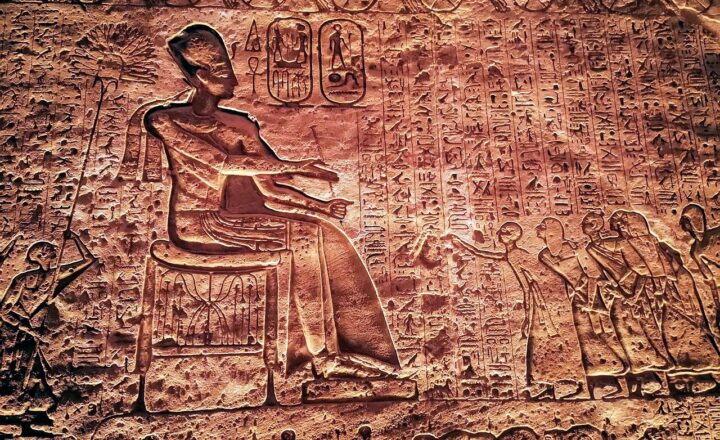The UFO Sightings That Sparked a Media Frenzy – and How the Government Responded
November 15, 2024

Unidentified Flying Objects (UFOs) have captivated the public imagination for decades. From the mid-20th century to the present day, a series of UFO sightings have not only perplexed scientists and skeptics but also ignited media frenzies that captivated millions. This article will delve into some of the most sensational UFO sightings that sparked public interest, examine how the media played a pivotal role in shaping those narratives, and explore the various responses from government agencies.
1. The Dawn of UFO Sightings in America
The modern era of UFO sightings began in the late 1940s. In June 1947, Kenneth Arnold, an aviator, reported seeing nine unusual objects flying near Mount Rainier in Washington. Arnold described their motion as being like that of a saucer skipping across the water, coining the term “flying saucer.” This sighting caught the attention of national media outlets and laid the groundwork for what would become an enduring fascination with UFOs across America.
The Arnold sighting led to a torrent of other reports flooding in from across the country. Amid a post-war environment filled with uncertainty, many Americans began to speculate about the possibility of extraterrestrial life.
2. The Roswell Incident: Mystery and Conspiracy
Arguably the most famous UFO incident in history is the Roswell Incident of July 1947. A mysterious object crashed on a ranch near Roswell, New Mexico, and military personnel initially reported recovering a “flying disc.” This statement quickly changed to a weather balloon explanation, which fueled speculation and conspiracy theories.
The Roswell incident not only stirred media frenzy but also raised questions about government transparency. Radio, print, and later television outlets sensationalized the event, and it became the cornerstone of pop culture’s representation of UFOs. The incident was revisited myriad times in films, documentaries, and books, further embedding it into the American psyche.
3. The Nationwide UFO Wave of 1973
In late 1973, a significant wave of UFO sightings swept across the United States. Reports of strange lights and sightings came in from various states, including Michigan, Ohio, and Pennsylvania, leading to waves of media coverage. Witnesses reported seeing large, silent crafts hovering, and some accounts included physical close encounters.
The media frenzy grew with each new sighting. Newspapers and television networks broadcast interviews with witnesses, creating a narrative that captured the public’s imagination. The government was prompted to issue statements downplaying the likelihood of extraterrestrial involvement and attributing many sightings to misidentified aircraft or atmospheric phenomena.
4. Project Blue Book: The Government’s Official Inquiry
In response to the increasing number of UFO sightings, the U.S. Air Force initiated Project Blue Book in 1952. The program involved collecting and investigating thousands of reported UFO sightings.
Through Project Blue Book, the government aimed to ascertain whether UFOs posed a threat to national security and to scientifically analyze UFO-related data. Although the majority of sightings were explained as natural phenomena or man-made objects, the project fueled public speculation and media narratives about the secrecy surrounding UFOs. The program disbanded in 1969, declaring that no UFO posed a threat and that there was no evidence that extraterrestrial life had visited Earth.
5. The Modern Era of UFO Reports
Recent years have witnessed a resurgence in public interest concerning UFOs. In 2017, a series of videos featuring pilots from the U.S. Navy encountering unexplained aerial phenomena (UAP) were leaked, resulting in extensive media coverage. The Pentagon’s acknowledgment of the existence of UAPs was a significant shift in tone that rekindled debates about extraterrestrial visitation.
In 2020, the Department of Defense officially established the Unidentified Aerial Phenomena Task Force to further investigate sightings and assess any threats posed by such phenomena. This directive illustrated a notable evolution in governmental transparency about UFOs and their implications.
6. The Role of the Media in Shaping UFO Narratives
Media play an indispensable role in shaping public perception of UFO sightings. Throughout history, sensationalist reporting often exaggerates claims, leading to increased public curiosity and sometimes panic. From newspapers in the 1940s to modern social media, the portrayal of UFO encounters has evolved but has remained largely sensationalistic.
Popular culture, fueled by films and television shows, often perpetuates myths around UFOs, further embedding them into collective consciousness. Public figures and organizations that champion UFO research, including the likes of the Mutual UFO Network (MUFON), rely heavily on media to spread their messages, encouraging more citizens to come forward about their experiences.
7. Conclusion: A Never-Ending Fascination
The subject of UFOs remains a source of intrigue and skepticism, leading many to ponder humanity’s place in the universe. While the government has often been dismissive regarding UFO sightings, citizen fascination remains unwavering. As technology advances, many hope for clarity regarding the mysteries of UFOs and the potential existence of extraterrestrial life.
The media will undoubtedly continue to play a crucial role in shaping narratives about UFOs, maintaining public interest, and holding authorities accountable for their findings. With each new sighting and each government response, the story of UFOs evolves, propelling the conversation about whether we are indeed alone in the vastness of space.







